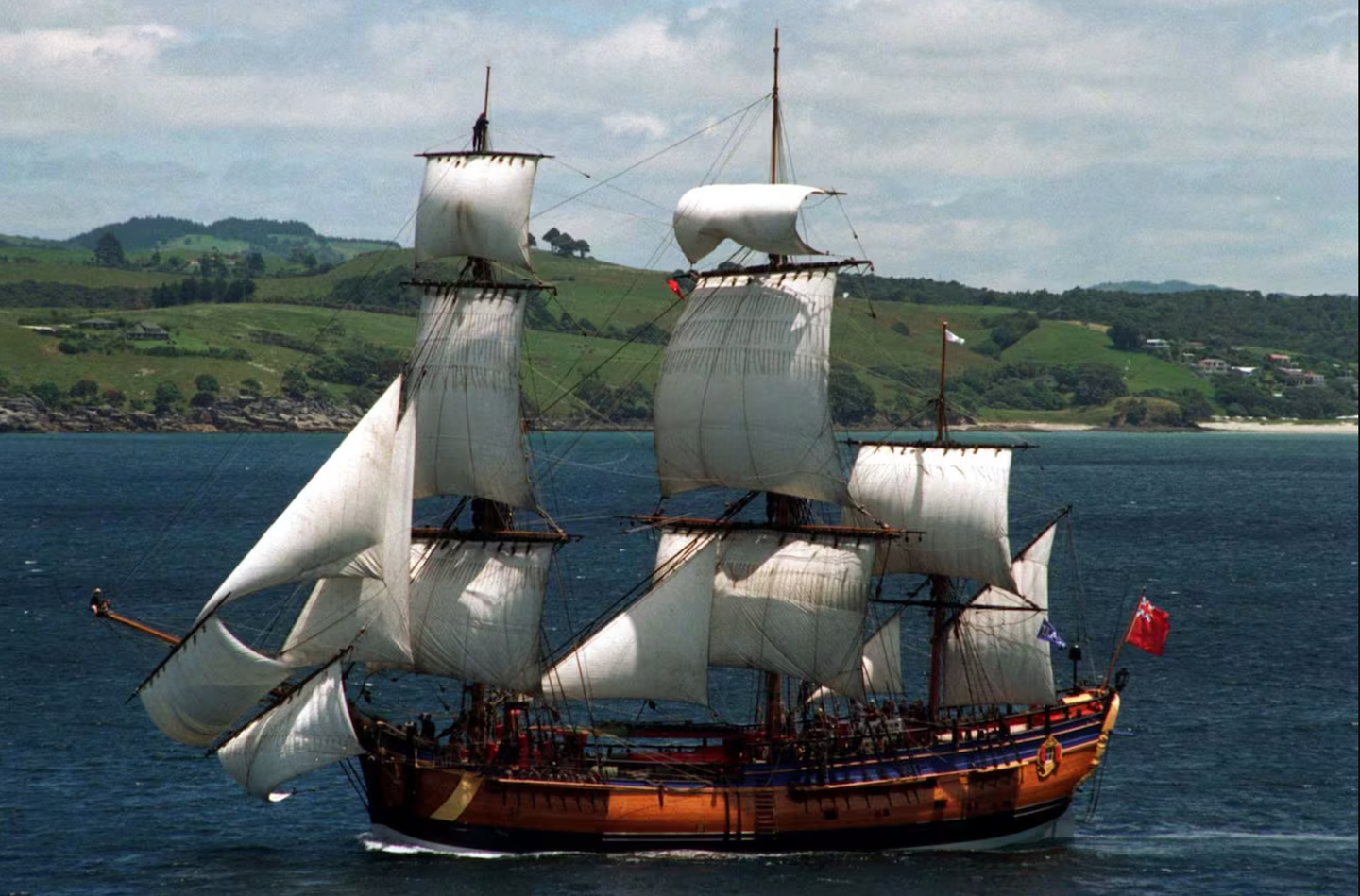Mysterious shipwreck off Rhode Island could be Captain Cook’s missing ship
A debate among historians, archaeologists, and maritime enthusiasts continues to stir controversy in both New England and Australia.

[Jan. 2, 2024: JD Shavit, The Brighter Side of News]
A longstanding debate among historians, archeologists, and maritime enthusiasts continues to stir controversy in both New England and Australia. (CREDIT: Creative Commons)
A longstanding debate among historians, archaeologists, and maritime enthusiasts continues to stir controversy in both New England and Australia. The focal point of this heated discussion is a shipwreck discovered off the coast of Rhode Island, known initially as RI 2394, which has been at the center of a tug-of-war between two camps—those who believe it to be the famous HMS Endeavour, once captained by the legendary explorer Captain James Cook, and those who remain skeptical.
This shipwreck, one of five found just north of Goat Island in Newport Harbor, was intentionally scuttled by the British during the American War of Independence.
Archaeologists have been meticulously examining this historical find for decades, and in February of 2022, the Australian National Maritime Museum made a bold proclamation, asserting that RI 2394 was indeed the long-lost HMS Endeavour. However, the Rhode Island Maritime Archeology Project swiftly raised doubts about this claim.
Fast forward almost two years, and the Australian team is back in the spotlight, armed with what they believe to be compelling new evidence from the ship's pump well and bow, strengthening their case for the ship's true identity as the Endeavour.
Related Stories
Kieran Hosty, an Australian archeologist, explained on the group's website, "Archaeology is an interesting process; we call on the preponderance of evidence where we've got a whole series of things that tie into Endeavour. And so far, we've found lots of things that tick the boxes for it to be the Endeavour and nothing on the list which says it's not."
The ongoing excavation efforts have yielded critical data. Samples taken from the ship have revealed that the timber used is British, the size closely matches the dimensions of the Endeavour, and the keel length aligns remarkably closely with survey measurements taken by the British Royal Navy of Cook's vessel.
What sets this latest revelation apart are two specific pieces of evidence that closely match historical survey records: the position of the pump-shaft stump and pump-well partitions. These elements align perfectly with the shipwreck, reinforcing the claim of its true identity. Furthermore, a unique feature, the scarph joint in the keel timber, was found to be an identical match to the historical ship plans, bolstering the case even further.
Still image from an animation on the Australian National Maritime Museum's Deep Dive website, which shows the scuttling of the Endeavour. (CREDIT: Australian National Maritime Museum)
Australian marine archaeologist James Hunter emphasized the significance of this discovery, stating, "The stem scarph is identical to what we know from the plans of Endeavour. It's also a very unique feature. We've gone through a whole bunch of ships' plans, lots of 18th-century plans, and we can't find anything else like it."
Adding a touch of anecdotal evidence to the mix, the archaeological team uncovered coal residue in the hull, a remnant of the ship's previous life as a cargo vessel. "I think it's just rattled down from when it was a collier and got stuck in the bilge," suggested Hunter.
A member of the Australian National Maritime Museum team at the wreck. (CREDIT: Australian National Maritime Museum)
Despite their confidence in the findings, both Hunter and Hosty plan to assemble a comprehensive paper for peer review before making their case official. Nevertheless, they express a strong belief that they have indeed located Captain Cook's fabled HMS Endeavour.
Meanwhile, the Rhode Island Marine Archaeology Project has remained largely silent in response to the recent Australian claims. In 2022, the group's executive director criticized the Australian announcement as a "breach of contract" between the two organizations, which had previously collaborated.
While the shipwreck site exhibits characteristics consistent with those expected of the Endeavour, questions persist. As the executive director of the Rhode Island Marine Archaeology Project pointed out, "there has been no indisputable data found to prove the site is that iconic vessel, and there are many unanswered questions that could overturn such an identification."
Daryl Karp, the chief executive of the Australian National Maritime Museum, emphasized that along with the new findings, there has been no evidence found against the notion that this is, indeed, the Endeavour.
Captain James Cook's voyages are celebrated for charting lands previously unknown to the British, including New Zealand, Australia, Newfoundland, and Hawaii. His coal ship, later utilized in the War of Independence, ultimately met its fate off the coast of Rhode Island. The quest to determine its true identity continues, with archaeologists striving to unveil the secrets of this enigmatic shipwreck.
As Kieran Hosty aptly put it, "We will never find anything on this site that screams Endeavour. We will never find a sign saying, 'Cook was here.' We will never see a ship's bell with Endeavour crossed out and Lord Sandwich inscribed on it." The mystery endures, but the evidence keeps mounting in favor of the ship's true identity as the legendary HMS Endeavour.
For more environmental good news stories check out our Green Impact section at The Brighter Side of News.
Note: Materials provided above by The Brighter Side of News. Content may be edited for style and length.
Like these kind of feel good stories? Get the Brighter Side of News' newsletter.



